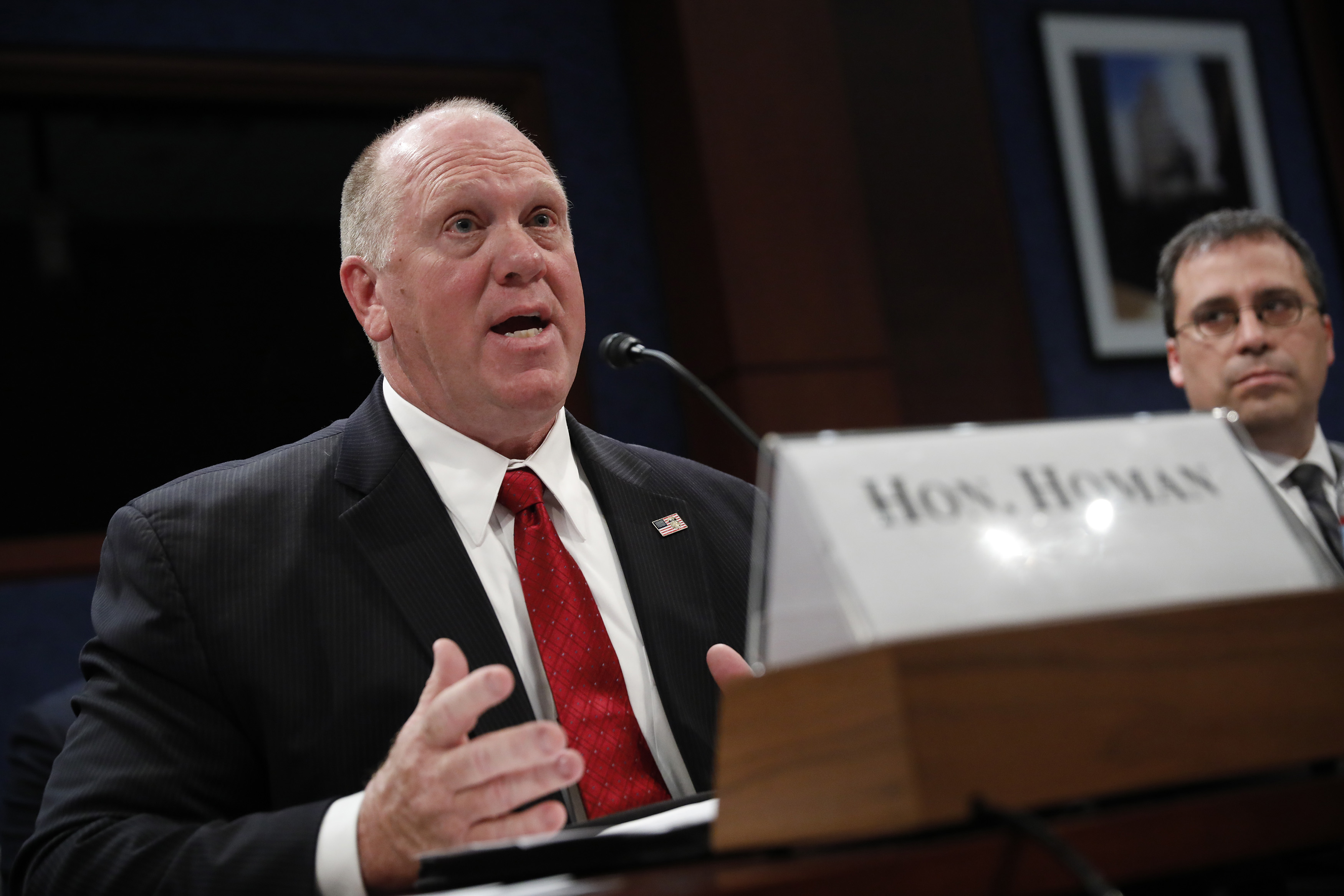President Donald Trump‘s border czar, Tom Homan, said on Sunday that not all undocumented migrants will be removed from the United States, citing costs associated with the administration’s mass deportation plans.
Newsweek has reached out to the White House via email for comment on Sunday morning.
Why It Matters
The Trump administration has vowed to conduct the largest mass deportation operation in U.S. history targeting the estimated 11.7 million people who are in the country without legal status.
A New York Times/Ipsos poll, carried out from January 2 to 10, found 55 percent of voters strongly or somewhat supported such plans. Eighty-eight percent supported “deporting immigrants who are here illegally and have criminal records.” Large majorities of Democrats and Republicans agreed that the immigration system is broken.
However, the policy has sparked concerns about its significant costs and potential impact including on families and the economy. Homan has previously said the administration will initially need $86 billion from Congress to begin mass deportations.
What To Know
In a Sunday interview with ABC News’ This Week, Homan discussed the mass deportation plans and what he thinks will be accomplished.
When asked by host Martha Raddatz why he didn’t speak about getting “every immigrant who is in the country illegally out,” Homan said he’s being “realistic,” citing costs.
“I’m being realistic. We can do what we can with the money we have. We’re going to try to be efficient, but with more money we have, the more we can accomplish. I don’t have the money to remove that many people,” he said.
Mass removals could cost the U.S. $315 billion for a one-time effort, according to the American Immigration Council. The long-term cost of deporting a million people per year could average $88 billion annually, totaling $967.9 billion over a decade. This would require a vast expansion of detention and court systems.
The Department of Homeland Security (DHS) has estimated substantial costs for deportation logistics, including air transportation, and has said the daily cost for a bed for one adult in a detention center is about $165.
In regard to resources, Immigration and Customs Enforcement (ICE) relies on a combination of its own processing centers, private detention facilities, and prisons under state and city contracts. However, it currently lacks facilities for detaining immigrant families, who constitute a significant portion of arrivals at the southern border.
While the Trump administration has not publicly said how many immigration detention beds it needs to achieve its goals, or what the cost will be, ICE currently has the budget to detain only about 41,000 people, according to the Associated Press.
House Speaker Mike Johnson, a Louisiana Republican, denied on NBC News last week that the plan would cost the federal government trillions of dollars, but didn’t offer an estimated cost.
“It won’t cost trillions of dollars. I think we don’t yet know the dollar figure,” the House speaker said. “But I will tell you that the American people are going to support that effort. And we’re going to begin with the most dangerous elements. And you’re going to see a dramatic change in the country because of it.”
Aaron P. Bernstein/Getty Images
Other Costs
Experts have warned that mass deportations could significantly impact the U.S. meat industry, potentially causing a spike in beef prices. The removal of thousands of undocumented workers may disrupt supply chains, worsen labor shortages, and ultimately lead to higher meat prices for consumers.
Meanwhile, agricultural output could decline by $30 to $60 billion if Trump’s flagship policy is enacted, according to the American Business Immigration Coalition.
What People Are Saying
Rebecca Shi, executive director of the American Business Immigration Coalition, previously told Newsweek: “If mass deportations overreach, there’s going to be just serious disruptions to our economy. We are urging Congress and President Trump to move forward with solutions that secure the border but also work to reform our broken immigration system so that, you know, our economy can still be the number one economy in the world.”
“We know that the vast majority of immigrants in this country are law-abiding. And we know that the actual crime rate of immigrants is lower than that of native-born people.”
House Speaker Mike Johnson said on NBC News’ Meet the Press last week: “I cannot think of a better dollar-for-dollar investment than to restore the security and the safety of the country. We’ve had a wide-open border for four years and millions upon millions of illegal persons. We have dangerous illegals in the country, criminals who have already committed crimes here, violent crimes against American citizens.”
University of Pennsylvania Carey Law School professor Fernando Chang-Muy previously told Newsweek: “Mass deportation would require additional staff to round up and process individuals, more prison space, and everything else that goes into running prisons—salaries, food, uniforms, HVAC, heating and aircon expenses, etc. All of this requires funding appropriation from the first branch of government—Congress. If the second branch, the executive branch, acts without significant legislative oversight, it could challenge the balance of powers.”
What Happens Next
As the Trump administration continues its stance on immigration enforcement, ICE operations will likely continue to escalate. However, the Trump administration’s reliance on military resources and private investors for detention expansion is set to escalate debates in Congress.
With federal budgets already stretched, the scope and sustainability of mass deportations remain uncertain.


